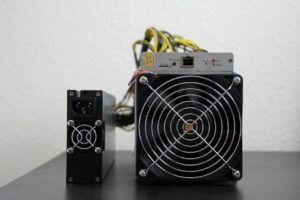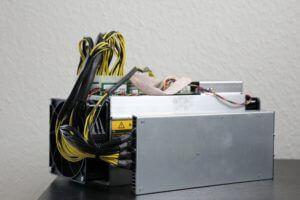
Bitcoin and the blockchain technology might be revolutionising the way we transfer money across the world. A process that usually takes several days now takes only a few seconds or minutes and with very minimal or no cost.
On the other side, bitcoin mining, the very process that allows the network to operate is extremely energy-hungry by design. In fact, some jurisdictions have banned bitcoin mining altogether due to its high energy demand.

Bitcoin mining allows the network to operate without intermediaries like banks. This involves solving complex mathematical problems that ensure the integrity of the network.
So, exactly how much energy is consumed through bitcoin mining? This is a complex question but one economist has published a paper on the subject.
Bitcoin mining is done by ASIC’s, specialised hardware that come with immense processing power. The Antminer produced by a Chinese company called Bitmain is the popular option for many miners accounting for about 70% of the market.
Economist Alex de Vries uses this to estimate the total power consumption. The operations of many manufacturers of these equipment are usually held in secret and this research tries to work around this using various strategies but primarily and economic model.
Many Variables
Estimating energy consumption is no mean task. There are just too many variables. One approach that the study published in Joules, a peer-reviewed journal considers is the hashrate.

‘As per mid-March 2018, about 26 quintillion hashing operations are performed every second and non-stop by the Bitcoin network. At the same time, the Bitcoin network is only processing 2–3 transactions per second (around 200,000 transactions per day). This means that the ratio of hash calculations to processed transactions is 8.7 quintillion to 1 at best. The primary fuel for each of these calculations is electricity,” according to the study.
Hashrate is however not enough to estimate total energy consumption.
Mining equipment generate a lot of heat; in fact as much heat as a portable heater. This requires a lot of cooling meaning more electricity. This is difficult to estimate given the fact that different mining operations use different cooling technologies and operate in different environments, the study notes.
A bitcoin mining facility in Inner Mongolia, for example, is said to be running on 40MW of power according to Quartz. However, it only accounts for 4% of bitcoin network’s hashrate.
Economic Model
The study settles on an economic model to estimate electricity consumption. Over its lifetime, 60% of the costs of running an Antminer is estimated to go into electricity.
This method, however, assumes rational miners. We have obviously seen cases of people stealing electricity to mine bitcoin.

